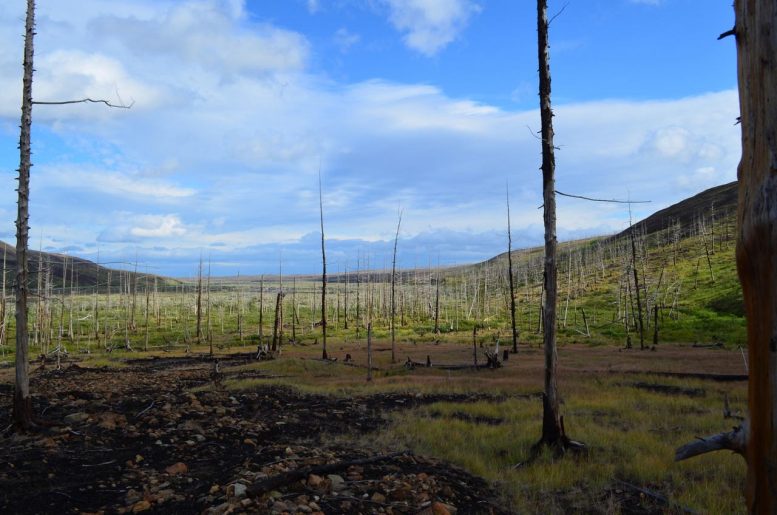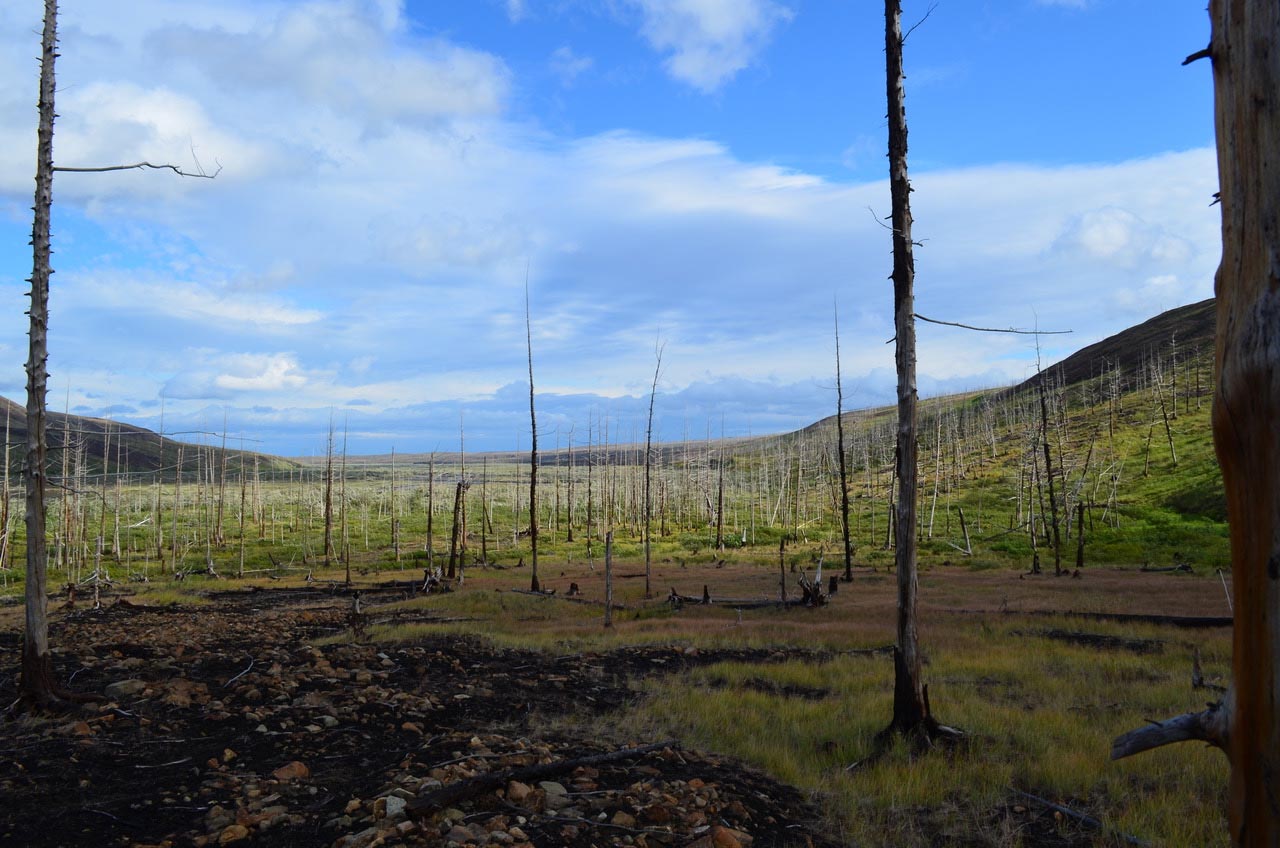Photo credit: Dr. Alexander Kirdyanov
The largest study to date of tree rings from Norilsk in the Russian Arctic showed that the direct and indirect effects of industrial pollution in the region and beyond are far worse than previously thought.
An international team of researchers, led by the University of Cambridge, combined ring width and wood chemistry measurements from living and dead trees with soil properties and computer modeling to show that the damage caused by decades of nickel and copper mining is not just causing the local damage have influenced the environment but also the global carbon cycle.
The extent of the damage to the boreal forest, the largest land biome on earth, can be seen in the annual growth rings of trees near Norilsk, where the death has spread to up to 100 kilometers. The results will be published in the journal Ecology letters.

The widespread pollution has caused devastating forest decay east of Norilsk, Russia. Photo credit: Dr. Alexander Kirdyanov
With more than 100,000 inhabitants, Norilsk in northern Siberia is the northernmost city in the world and one of the most polluted places on earth. Since the 1930s, the intensive mining of massive nickel, copper and palladium deposits in the region, combined with few environmental regulations, has resulted in severe pollution. A massive oil spill in May 2020 has contributed to the extreme environmental damage in the region.
The high air emissions of the Norilsk industrial complex are not only responsible for the direct destruction of around 24,000 square kilometers of boreal forest since the 1960s, but also the surviving trees in large parts of the northern latitudes. The high levels of pollution lead to declining tree growth, which in turn affects the amount of carbon that can be bound in the boreal forest.
Although the connection between environmental pollution and forest health is known, the “divergence problem” in dendrochronology or the study of tree rings could not be explained: a decoupling of the tree ring width from that since the 1970s.
Using the largest dataset to date of tree rings from living and dead trees to reconstruct the history and intensity of forest decline in Norilsk, the researchers have shown how pollution from mines and melts is at least partially responsible for the “arctic darkening” phenomenon, the new phenomenon Provides evidence for the divergence problem.
“With the information stored in thousands of tree rings, we can monitor the effects of the uncontrolled environmental disaster in Norilsk over the past nine decades,” said Professor Ulf Büntgen of the Cambridge Department of Geography, who led the research. “While the issue of sulfur emissions and forest dying has been successfully addressed in much of Europe, we have not been able to see the impact for Siberia, mainly due to the lack of long-term monitoring data.”
The expansion of the annually resolved and absolutely dated tree ring width measurements compiled by the work’s lead author, Alexander Kirdyanov, as well as new high resolution measurements of wood and soil chemistry enabled researchers to quantify the extent of the devastating ecosystem damage in Norilsk, which was peaking In the 1960s.
“We can see that the trees near Norilsk die off massively in the 1960s due to increasing environmental pollution,” said Büntgen. “As air pollution in the Arctic accumulates due to large circulation patterns, we expanded our study well beyond the direct impact of Norilsk’s industrial sector and found that trees in the high northern latitudes also suffer.”
Researchers used a process-based forward model of boreal tree growth with and without surface irradiance as a pollutant substitute to show that dimming the Arctic has significantly reduced tree growth since the 1970s.
The darkening of the Arctic is a phenomenon caused by increased particles in the earth’s atmosphere, be it from pollution, dust or volcanic eruptions. The phenomenon partially blocks sunlight, slows down the evaporation process and disrupts the water cycle.
Global warming is expected to increase boreal tree growth. However, the researchers found that the tree’s growth slowed in northern Siberia with the peak of pollution. They found that the levels of pollution in the atmosphere affected the trees’ ability to photosynthesize sunlight to convert it into energy, and therefore could not grow as fast or as fast as in areas with lower levels of pollution.
“What surprised us is how widespread the effects of industrial pollution are – the extent of the damage shows how fragile and sensitive the boreal forest is,” said Büntgen. “Given the ecological importance of this biome, pollution in the high northern latitudes could have a huge impact on the entire global carbon cycle.”
Reference: September 25, 2020, Ecology letters.
DOI: 10.1111 / ele.13611



